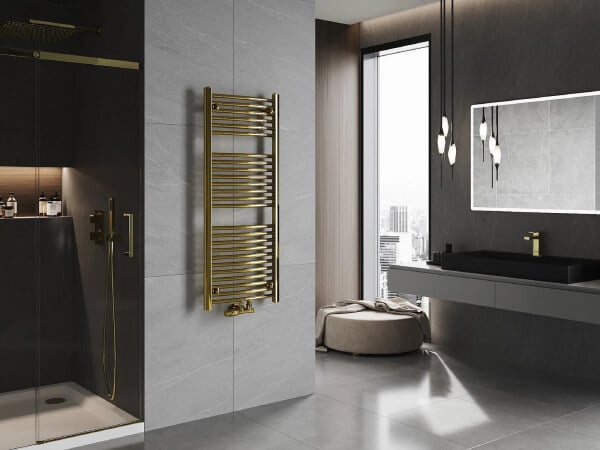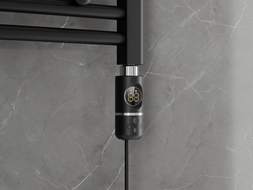
Installing a sink faucet is one of the most important tasks when setting up a bathroom. A properly installed faucet ensures high comfort, aesthetics, and safety of the entire plumbing system. Regardless of whether you choose a freestanding, countertop, or wall-mounted faucet, it is important that the installation process goes without interruptions. Read how to install a sink faucet, what to pay attention to, and which tools you will need.
What will you learn from this article?
Are you planning to install the sink faucet yourself? Great! In this article, step by step, we will show you how to do it so that the entire installation runs smoothly and the faucet works flawlessly for many years. Additionally, you will read about:
- What models of faucets are available on the modern market?
- How to precisely install a countertop, freestanding, and wall-mounted faucet?
- How to avoid problems with a leaking faucet or damage to the plumbing system?
- What tools will be needed to ensure the sink faucet is properly secured?
Types of Sink Faucets and Their Installation
The choice of the right sink faucet affects the usability of the bathroom as well as the aesthetics of the interior. Available faucet models differ not only in design but also in installation method and functionality. When deciding on a specific type of faucet, it is worth considering how it will work with the sink and whether it will meet the practical and comfort needs of other users. Here are the most commonly encountered types:
- Freestanding Faucet – mounted directly on the sink or countertop, this is currently one of the most popular models. It has openings for plumbing installation, allowing anyone to easily secure it to the sink. It is commonly chosen for its versatility and ease of installation.
- Countertop Faucet – similar in appearance and functionality to a freestanding faucet, but mounted on the countertop next to the basin. This type of faucet is gaining a larger fan base due to its modern design and arranging possibilities.
- Wall-Mounted Faucet – this sink faucet is mounted directly to the wall. Such an installation requires precise planning, as it must be placed at the correct height and accurately matched to the plumbing. It is often chosen for minimalist bathrooms where space saving is crucial.

Installing a Sink Faucet – Step by Step
Before you start the installation, make sure you have all the necessary tools and elements within reach. The installation of a sink faucet requires the following:
- Adjustable Wrench or Pipe Wrench – for tightening nuts and securing screws.
- Pliers – for the potential disassembly of the old faucet.
- Washers – usually included with the chosen faucet model, but it’s good to check their condition before installation.
- Water Supply Hoses – typically included with the faucet from the manufacturer.
- Nuts, washers, mounting screws, and securing caps – usually included in the set. These are what secure the bottom part of the faucet body to the sink or countertop.
- Silicone – for sealing the areas where the faucet meets the countertop or sink (not always necessary).
Before starting the work, ensure that the water supply pipes are closed. Use the main valve or shut-off valves located at the ends of the hoses under the sink. Otherwise, water may flood your entire bathroom.
How to Secure a Freestanding Sink Faucet?
Freestanding models are the most commonly chosen due to their easy installation and versatility. To install such a faucet, you must:
1. Prepare the Opening in the Sink
The sink or countertop should have a factory-installed opening for the faucet of the appropriate diameter. If it doesn’t, you need to cut it yourself using the appropriate tool. Freestanding faucets typically require one opening with a diameter of 32 to 35 mm.
2. Install the Washers
Put a rubber or silicone washer on the underside of the faucet body to protect the connection from leaks. Then, place the faucet in the sink opening, ensuring it is properly seated.
3. Tighten the Faucet Securely – Use the Mounting Screws!
From under the sink or countertop, place the mounting washers, and then tighten the nuts using an adjustable wrench. Ensure the faucet is in the correct position and stable, but do not overtighten as this may damage the head of the screw.
4. Connect the Supply Hoses
Connect the hoses to the valves that control the hot and cold water supply. These hoses should be tightened to a noticeable resistance. Otherwise, a leak may occur. The shut-off valves are usually located under the sink or in the bathroom cabinet.
5. Check for Leaks!
After completing the installation, open the shut-off valves and check if the water flows freely. Ensure there are no leaks at the connections.
Installing a Countertop Faucet Can Also Be Simple!
Countertop faucets, which are installed directly on the countertop next to the sink, are very popular due to their aesthetic appeal and modern design. Their installation is very similar to that of a freestanding faucet, with the difference being that the size of the opening in the countertop and the height of the countertop sink need to be planned more precisely.
Installing a Bathroom Faucet – What You Should Know?
This faucet model also requires an opening in the countertop, but it must be larger than for the freestanding variant, as the countertop sink faucet has a bulkier structure. Then, similar to the traditional faucet, the washers and securing pads need to be installed, and the fitting needs to be tightened from under the countertop.
The water supply hoses are connected to the shut-off valves, ensuring they are securely tightened.

How to Secure a Wall-Mounted Faucet?
Wall-mounted faucets are less popular than freestanding ones, but they are still used in modern bathrooms. Their installation requires a more advanced approach, as it is necessary to precisely determine the height of the faucet and the placement of the pipes bringing water.
First, prepare the plumbing installation. The shut-off valves for the wall-mounted faucet must be correctly located and installed in the wall. The water supply pipes should be at a height of about 100-110 cm from the floor, but the final placement depends on the type of sink.
Secure the faucet body to the wall, ensuring it is well seated. Use protective caps and other mounting elements included in the purchased set. Then connect the hot and cold water supply pipes. Check for leaks.
Replacing a Sink Faucet – What to Pay Attention To?
Replacing the faucet in the sink is a process very similar to installing a sink faucet. An important step before this task is to unscrew the old fitting, which may require significant force. Remember, when you want to replace the faucet, before starting to disassemble, turn off the water supply and check the condition of the plumbing and all pipes.
Installing a Sink Faucet – It’s Not Difficult!
Installing a sink faucet is a task that you can accomplish yourself with the right tools and guidelines. It is important to follow safety rules and carefully check the integrity of the connections after installation is complete. This can help avoid problems related to unwanted leaks. Enjoy your sink faucet for many years!



















